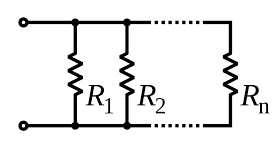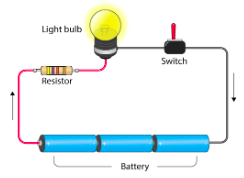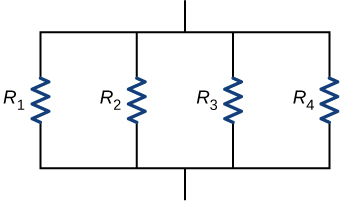The Equivalent Resistance formula of an object measures how much it opposes the flow of current. It is calculated in Ohms. The flow of current can be increased by combining two or more resistances which is whether in a series or parallel arrangement.
- Equivalent Resistance refers to the point where the total resistance of a series or parallel arrangement is calculated.
- There are separate formulae to calculate equivalent resistance for series and parallel arrangements respectively.
- If a lot of energy is required then the resistance necessary will also be high. The equivalent resistance of a network is a single resistor which can replace the entire network.
- The applied voltage (V) will be the same as current (I).

Equivalent Resistance
Table of Contents
Circuit Components
A circuit consists of conductors i.e wire, pore souce, resistors, load and switch. A circuit always starts and ends at the same point and copper wire without insulation is used as a conductor. Switches are used to make or break a circuit.
A resistor is a passive element which means that it generates power instead of consuming it. The resistors can be connected in both parallel and series in different loops to have a more complex resistive network. Resistors exist in large circuits and are never in isolation. They either exist in series or parallel.

Circuit and its components
Series Arrangement of Resistance
Series Arrangement refers to the arrangement of resistors in which all the resistors are connected in one line.
- The total resistance of such an arrangement is the sum of each resistance.
RS = R1 + R2 + R3 + …….
- The series arrangement of resistors is implied to improve/increase the total resistance.
- If any resistor is broken or at fault then the entire circuit switches off.
- The structure is simpler compared to parallel circuits.
- The voltage across the resistors is different throughout in series circuits.

Resistance formula for series arrangement
Example of Series Resistance
Two 6-Ω resistors are connected in series, they are equivalent to having one 12-Ω resistor in the circuit. This is the concept of equivalent resistance in a series circuit.

Series Arrangement of Resistance
Parallel Arrangement of Resistance
Parallel Arrangement refers to the arrangement of resistors in which all the resistors are connected parallel to each other.
- The reciprocal of the total resistance of such an arrangement is the sum of the reciprocal of each resistance.
1 / RP = 1 / R1 + 1 / R2 + 1 / R3 + …….
- The current is branches out and combines when branches meet at a common point as shown in the figure.
- Even if one resistor is disconnected it does not affect the circuit.
- The parallel arrangement of resistors is implied to decrease the total resistance.

Resistance formula for Parallel Resistance
Example of Parallel Resistance
Ques. Three resistors R1= 1.00, R2= 2.00 and R3= 2.00 are connected in parallel. The parallel connection is attached to a V= 3.00 V voltage source. What is the equivalent resistance?
Ans. The total resistance for a parallel combination of resistors is found using Req = in= 1 1Ri-1.
Hence, the total resistance for a parallel combination of resistor is
Req= 1R1 + 1R2+1R3-1=11.00+12.00+12.00-1= 0.50.
The total resistance of significant digits is Req= 0.50. This is the smallest individual resistance.


Comments are closed.